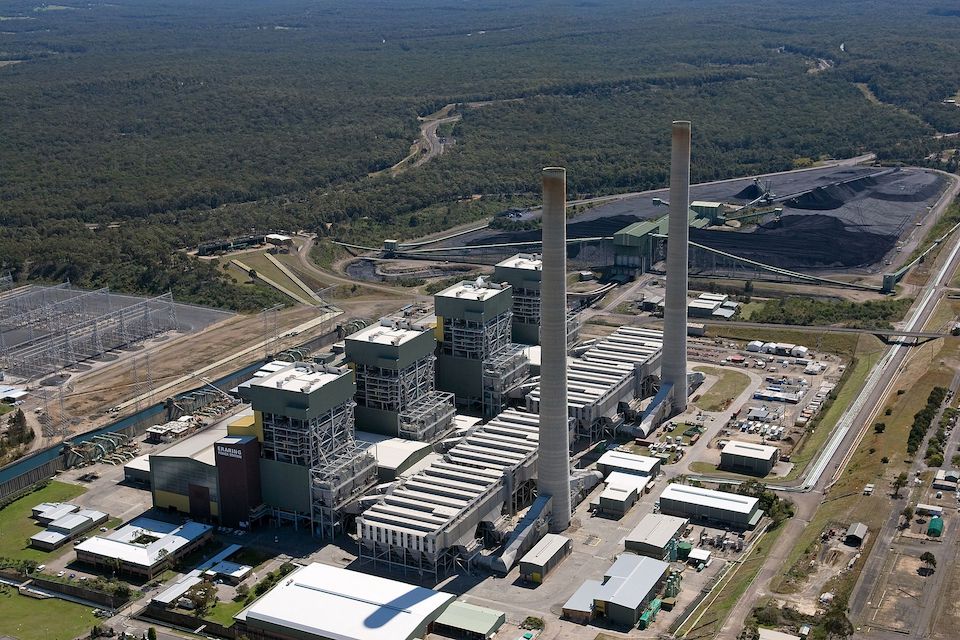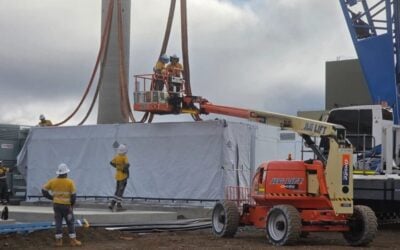
Steps forward have been taken in the Waratah Super Battery project in New South Wales, Australia, expected to be the largest battery storage system anywhere in the Southern Hemisphere.
The state’s government today instructed high voltage transmission system operator and manager Transgrid to carry out infrastructure work to enable the system to be connected to the grid, via one of the operator’s existing substations.
Enjoy 12 months of exclusive analysis
- Regular insight and analysis of the industry’s biggest developments
- In-depth interviews with the industry’s leading figures
- Annual digital subscription to the PV Tech Power journal
- Discounts on Solar Media’s portfolio of events, in-person and virtual
That opens up the project to proceed through development. Earlier this year, the government launched a tender to contract for various roles in delivering the Waratah Super Battery, deemed a Priority Transmission Infrastructure Project (PTIP).
The government also granted the project with Critical State Significant Infrastructure status earlier this year and is expected to make further announcements to enable construction to begin next year.
The project will act as a 700MW/1,400MWh “shock absorber” for the transmission grid, helping maintain the reliability and stability of the network from power surges resulting from events like lightning strikes or bush fires. It will also allow power lines to operate at higher capacity.
“The Waratah Super Battery will be the biggest network battery anywhere in the Southern Hemisphere, providing at least 700MW of standby network capacity to the grid,” state Treasurer and Minister for Energy Matt Kean said today.
It’s targeted commissioning date is 2025 and it is being built in part to help replace Eraring, a 2,880MW coal power plant scheduled for closure in August of that year by its owner and operator, Origin Energy.
Origin said in announcing the retirement date that it currently spends millions of dollars on keeping Eraring open and closing it down will not only save money but make a significant impact in reducing the company’s carbon emissions. Origin is also planning its own 700MW battery project in the region.
‘Pivot away from the old coal world’
Like other Australian states, New South Wales (NSW) is building a number of large Renewable Energy Zone (REZ) hubs.
In June, the state’s ruling Liberal Party committed AU$1.2 billion to fast-track transmission network upgrades and expansions to support the REZ plans, with the Waratah project the first announced beneficiary in the unveiling of the Party’s 2022-2023 State Budget.
Consumers in the Sydney, Newcastle and Wollongong regions of NSW will be able to access more energy generated locally, including renewables from the REZ hubs when those are built in the coming years.
Tenders for REZ capacity have attracted huge interest from developers, as reported by our colleagues over at PV Tech.
As with various other large-scale battery projects in development in Australia and around the world, the Waratah Super Battery will itself be built on the site of a defunct fossil fuel power plant site, Munmorah Power Station.
Putting battery energy storage system (BESS) facilities at thermal power plant sites has the practical advantage of allowing them to use existing grid interconnection points and transmission infrastructure like overhead wires. It also has the benefit of injecting economic activity back into regions where fossil fuel plants once played a role in that sense.
Meanwhile, its role as “shock absorber” to the system is being delivered through a Transgrid-built System Integrity Protection Scheme (SIPS) control system.
The SIPS system will “monitor the network for disruptions, trigger the super battery into action when required, and dial down energy elsewhere in the grid to balance supply,” Transgrid CEO Brett Redman said.
Other large-scale grid connected BESS projects in Australia, such as the Hornsdale Power Reserve in South Australia, already deliver SIPS.
“The co-location of the super battery and our substation will bring new life and jobs to the retired Munmorah coal-fired power station site as well as ensuring additional energy is located near high growth areas including the burgeoning Lake Macquarie and Central Coast regions,” Redman said, noting that the project is part of the NSW government’s Electricity Infrastructure Roadmap.
The Roadmap, Redman said, “is bringing together transmission, generation, storage and firming infrastructure to ensure we can pivot away from old world coal towards new, clean energy sources”.
Yesterday, Energy-Storage.news reported that major Australian energy generator and retailer EnergyAustralia is considering a 500MW BESS project in NSW.
Earlier this year, the Australian Energy Market Operator (AEMO) said that from about 1.5GW of dispatchable energy storage connected to the National Electricity Market (NEM) by the end of the first half of this year, that figure needs to grow to about 46GW by 2050, with a capacity of about 640GWh.






